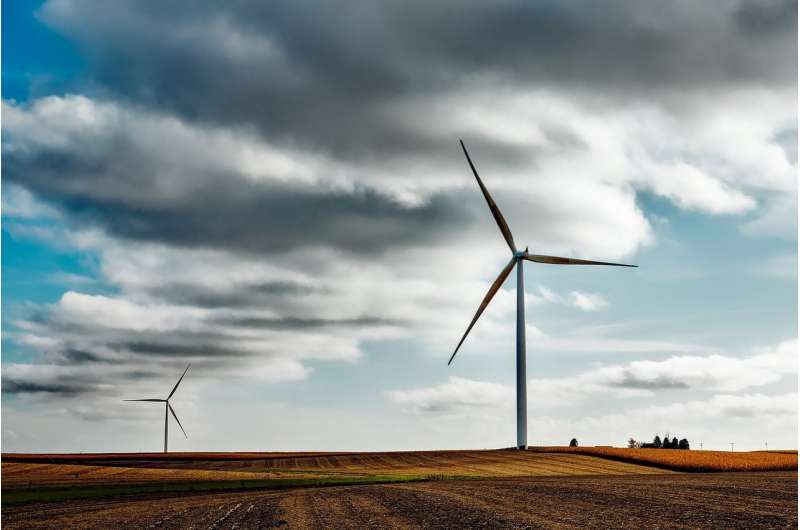Credit: CC0 Public Domain
Many countries—including Switzerland—are developing an energy strategy to meet various objectives such as reducing reliance on fossil fuels, cutting CO2 emissions and promoting the energy transition. That means governments have to make important decisions about which power sources to prioritize in the future and what technologies to invest in, in order to strike the right balance between keeping public spending under control and promoting clean energy.
These strategic decisions are generally based on forecasts of natural gas prices, solar power costs, electricity demand and hundreds of other parameters. Today, energy planners enter these forecasts into computer models that then identify the "best" strategies. But because these forecasts stretch out some 20–50 years, they are often wrong—meaning the models' output is often wrong, too. And this can lead to bad policy decisions.
Gas-fired power plants shut down before ever being put into service
"For example, the Netherlands have invested heavily in gas-fired power plants, based on the assumption that the price of natural gas would stay low," says Stefano Moret, a Postdoctoral Researcher at EPFL's School of Engineering (Industrial Process and Energy Systems Engineering Group) and author of the study. "However, their forecasts were mistaken, and many power plants were shut down before ever being put into service."
A new model to consider uncertainty
The EPFL scientists developed a new approach that accounts for uncertainty in energy-strategy decisions. More specifically, they came up with a model that uses a range of values for each input data rather than a set figure. "Instead of saying that the price of natural gas will be 3 cents per kilowatt-hour for the next few years, for example, we can enter a range of between 1.5 and 5 cents, depending on how the market evolves. That means our model can incorporate variations in prices, cost and demand," says Moret. The team's research indicates that once you factor in such uncertainty, energy strategies that rely heavily on renewable energy are not necessarily more expensive than those dependent on fossil fuels. Their findings have just been published in the European Journal of Operational Research.
Many mistake in past projections
The scientists' model, called Energyscope, is "a mathematical representation of an energy system with over 100 different input parameters," says Moret. "The problem with the models that governments currently use is that they are extremely complicated and can't work with ranges." What's more, many of those models are not available as open-source applications and therefore have limited reach.
The scientists found many mistakes in past projections, with calculated values off by as much as 200–300 percent from actual values. One such example is forecasts of natural gas prices in the United States.
The ranges that the scientists programmed into their model—for each of the hundreds of parameters—are based on historical data and expert opinions. For instance, to determine the range of future interest rates, they used data and projections from central banks and spoke with Economics professors.
Their research was carried out in the framework of the Joint Activity Scenarios & Modeling (JA-S&M) project for the Swiss Competence Centers for Energy Research (SCCER), which brings together eight universities to make energy modeling recommendations to the Swiss Federal Council. The model that the Swiss government currently uses was developed in the private sector and is not open source. The EPFL team intends to outline a more ambitious strategy that would cut CO2 emissions even further.
More information: Stefano Moret et al. Decision support for strategic energy planning: A robust optimization framework, European Journal of Operational Research (2019). DOI: 10.1016/j.ejor.2019.06.015
Provided by Ecole Polytechnique Federale de Lausanne
























